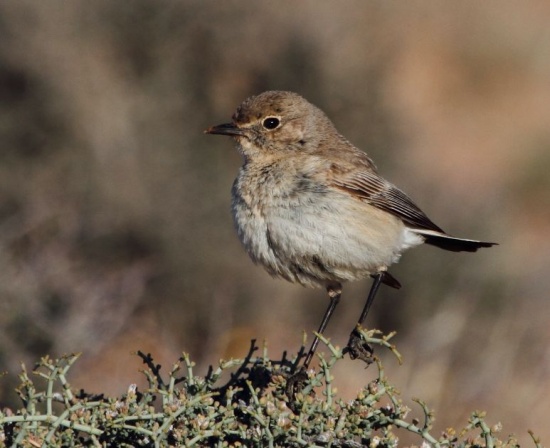(Added image) |
m |
||
| Line 1: | Line 1: | ||
| + | {{incomplete}} | ||
[[Image:Chat_Tractrac_2011_10_03_AlanManson.jpg|thumb|550px|right|Photo by {{user|Alan+Manson|Alan Manson}} <br />South of Pofadder, Northern Cape, [[South Africa]], October 2011]] | [[Image:Chat_Tractrac_2011_10_03_AlanManson.jpg|thumb|550px|right|Photo by {{user|Alan+Manson|Alan Manson}} <br />South of Pofadder, Northern Cape, [[South Africa]], October 2011]] | ||
| − | |||
;[[:Category:Cercomela|Cercomela]] tractrac | ;[[:Category:Cercomela|Cercomela]] tractrac | ||
==Identification== | ==Identification== | ||
Revision as of 14:16, 10 November 2011
| This article is incomplete. This article is missing one or more sections. You can help the BirdForum Opus by expanding it. |
- Cercomela tractrac
Identification
14-15 cm. White tail with a dark inverted “T” at the tip, black short straight bill, black legs and feet, dark eye.
The Namib form found on hummock dunes and at the coast has almost white plumage with grey wings and grey tail marking. The south-eastern form, found in gravel plains has brown upperparts with blackish flight feathers and tail markings. Its underparts are white. The sexes are similar, but the juvenile is more mottled than the adult.
Distribution
Angola, western Namibia and western South Africa.
Taxonomy
It's placed in genus Emarginata by Gill and Donsker.
Habitat
Desert scrub, hummock dunes and gravel plains.
Behaviour
It builds a cup-shaped nest of straw and leaves on the ground, usually under a bush or shrub. 2-3 red eggs are laid. This species is monogamous, mating for life.
The diet includes butterflies, bees, wasps, locusts and ants. Prey is typically taking in a short flight.




